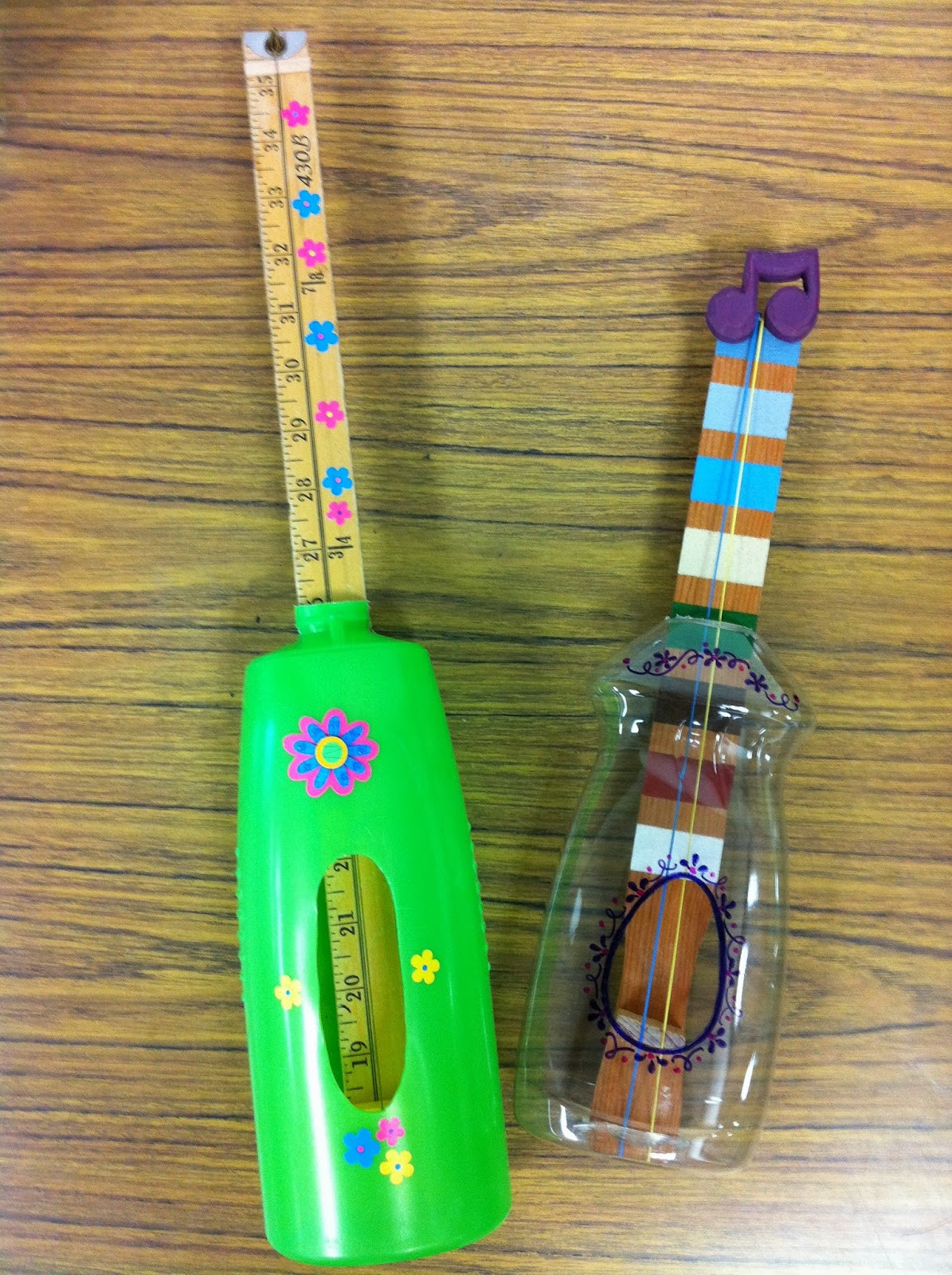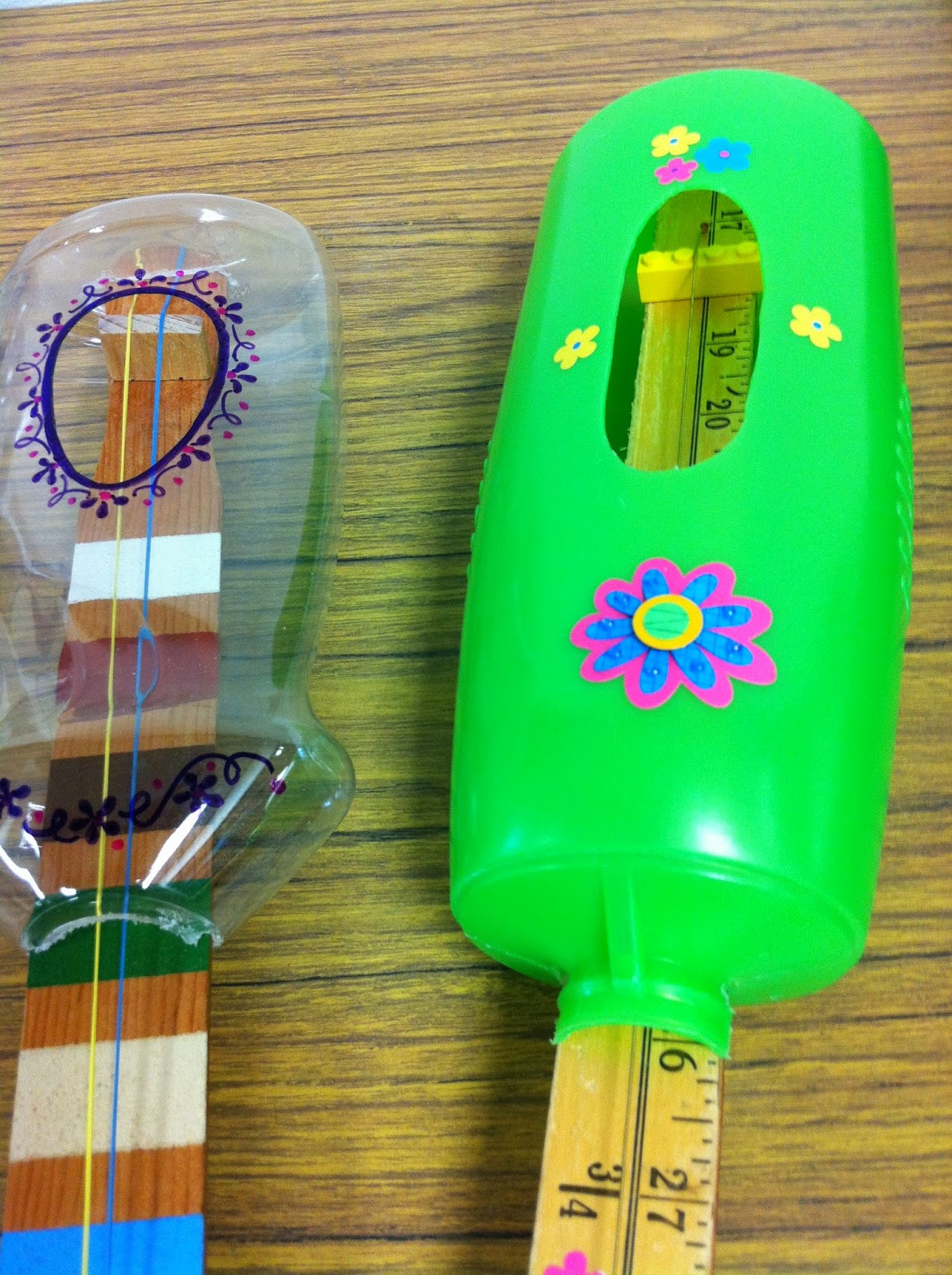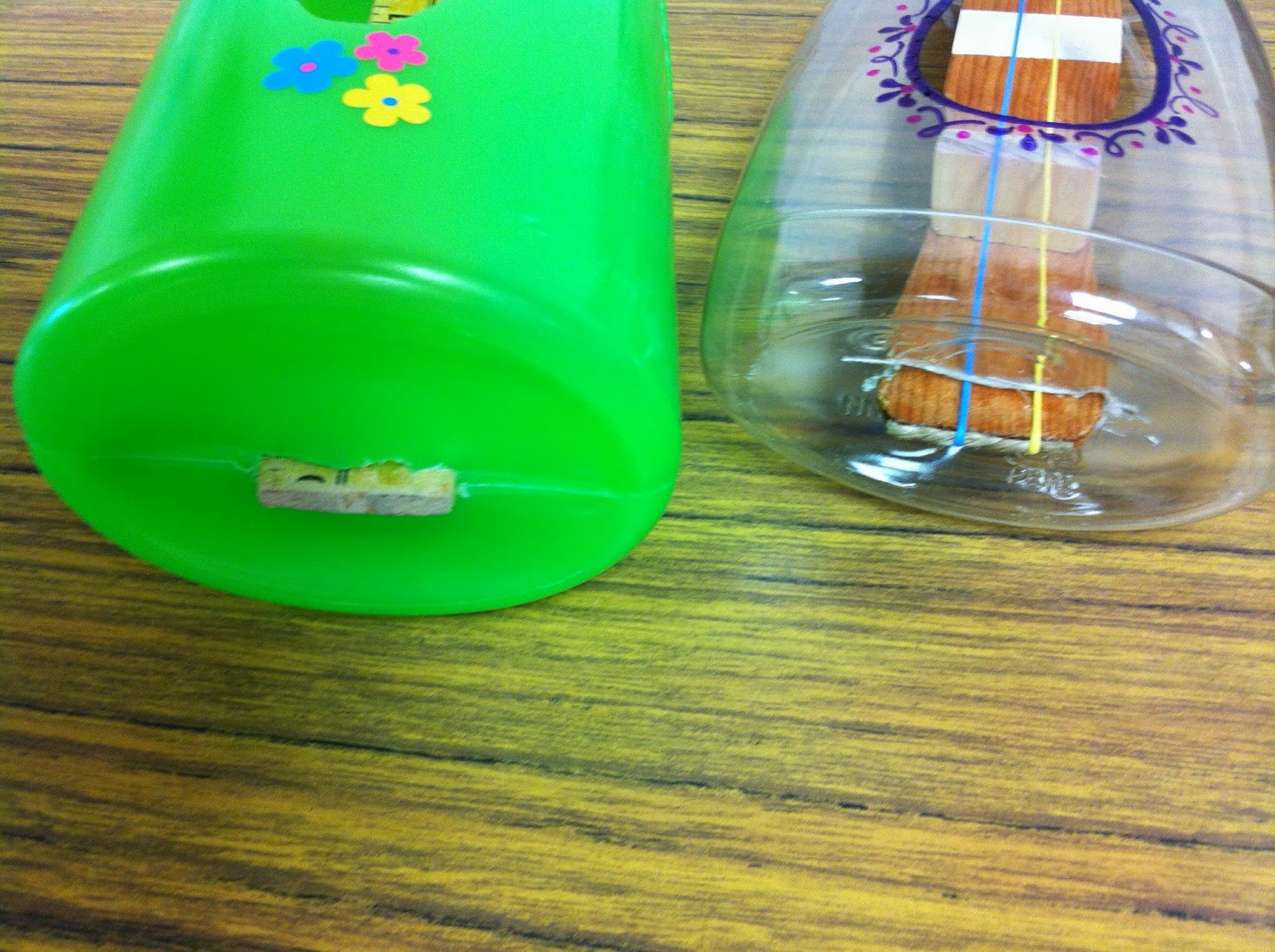Crafting a guitar out of plastic is an awesome DIY project that allows guitar players to explore their creativity and build a unique instrument. At guitarplayers.net, we provide resources and guidance to help you build this type of guitar and enhance your guitar playing experience. Discover the joy of making music with sustainable materials and explore guitar making resources to improve your musical abilities.
1. What Makes Plastic a Viable Material for Guitar Construction?
Plastic, surprisingly, makes a viable material for guitar construction due to its durability, workability, and unique sound qualities. Its capacity to withstand environmental factors makes it a lasting material, as stated in research from the Berklee College of Music in July 2025.
- Durability: Plastic guitars resist moisture and temperature changes, unlike wood, which can warp or crack.
- Workability: Plastic can be easily molded, cut, and shaped, making it ideal for creating custom guitar bodies.
- Unique Sound: Depending on the type of plastic used, these guitars can produce bright, resonant tones suitable for various musical styles.
2. What Types of Plastic Are Best Suited for Building a Guitar?
The best types of plastic for building a guitar include acrylic, polycarbonate, and ABS (Acrylonitrile Butadiene Styrene) due to their durability, acoustic properties, and ease of molding. Research from Guitar World indicates that in July 2024, ABS is commonly used for its impact resistance, while acrylic and polycarbonate offer clarity and tonal qualities.
- Acrylic: Known for its clarity and ability to transmit sound vibrations well, making it suitable for resonant guitar bodies.
- Polycarbonate: Offers exceptional strength and impact resistance, ideal for guitars that need to withstand rough handling.
- ABS: A versatile plastic that balances durability with workability, making it easy to shape and finish.
3. What Tools and Materials Do I Need to Build a Plastic Guitar?
To build a plastic guitar, you’ll need essential tools and materials that include a plastic sheet or mold, cutting tools, adhesives, guitar hardware, and finishing supplies.
- Plastic Sheet or Mold: Choose the type of plastic based on your desired sound and durability.
- Cutting Tools: A saw or laser cutter for shaping the guitar body and neck.
- Adhesives: Strong bonding agents to join the plastic components securely.
- Guitar Hardware: Tuning pegs, bridge, nut, and strings for playability.
- Finishing Supplies: Sandpaper, polish, and paint for aesthetics and protection.
4. How Do I Design the Body of a Plastic Guitar?
Designing the body of a plastic guitar involves creating a template, cutting the plastic to shape, and ensuring proper bracing for sound quality.
- Template Creation: Start with a paper or digital template of the guitar body you want to create.
- Cutting the Plastic: Use a saw or laser cutter to carefully cut the plastic according to the template.
- Bracing: Add internal bracing to the guitar body to enhance its structural integrity and improve sound resonance.
5. What Are the Steps to Constructing the Neck of a Plastic Guitar?
Constructing the neck of a plastic guitar involves shaping the neck profile, installing frets, and ensuring proper alignment for playability.
- Shaping the Neck: Use a rasp or file to shape the plastic neck to the desired profile, ensuring a comfortable grip.
- Installing Frets: Press or glue frets into the fret slots, ensuring they are level and properly spaced.
- Alignment: Align the neck with the body, ensuring it is straight and securely attached for optimal playability.
6. How Do I Assemble the Components of a Plastic Guitar?
Assembling the components of a plastic guitar includes attaching the neck to the body, installing hardware, and setting up the strings for optimal playability.
- Neck Attachment: Bond the neck to the body using strong adhesives, ensuring proper alignment and stability.
- Hardware Installation: Install the tuning pegs, bridge, and nut, ensuring they are securely fastened and properly positioned.
- String Setup: String the guitar, adjust the action (string height), and intonate the instrument for accurate pitch across the fretboard.
7. How Can I Optimize the Sound Quality of a Plastic Guitar?
Optimizing the sound quality of a plastic guitar involves selecting the right type of plastic, bracing the body effectively, and adjusting the setup for resonance.
- Plastic Selection: Choose plastics known for their resonant properties, such as acrylic or polycarbonate.
- Effective Bracing: Implement a bracing pattern that enhances the guitar’s structural integrity and sound projection.
- Setup Adjustments: Fine-tune the string action, intonation, and pickup height to optimize the guitar’s tone and playability.
8. What Are the Benefits of Building a Guitar Out of Plastic?
Building a guitar out of plastic offers benefits such as durability, weather resistance, and unique aesthetic options compared to traditional wooden guitars.
- Durability: Plastic guitars are less susceptible to damage from moisture and temperature changes.
- Weather Resistance: Ideal for players in humid or variable climates.
- Aesthetic Variety: Plastic allows for a wide range of colors, finishes, and custom designs not achievable with wood.
9. What Are the Potential Drawbacks of Using Plastic for Guitar Construction?
Potential drawbacks of using plastic for guitar construction include environmental concerns, tonal differences, and challenges in achieving traditional aesthetics.
- Environmental Impact: Some plastics are not biodegradable and can contribute to environmental pollution.
- Tonal Qualities: Plastic guitars may have a different tonal character compared to wooden guitars, which some players may not prefer.
- Aesthetic Limitations: Achieving the traditional look and feel of a wooden guitar can be challenging with plastic materials.
10. Where Can I Find Resources and Inspiration for Building a Plastic Guitar?
Resources and inspiration for building a plastic guitar can be found online, including tutorials, forums, and communities dedicated to DIY guitar building. Check out guitarplayers.net for more.
- Online Tutorials: Platforms like YouTube offer step-by-step guides on building plastic guitars.
- DIY Forums: Online forums and communities provide a space for sharing ideas, asking questions, and showcasing projects.
- Community Support: Connect with other builders to gain insights, troubleshoot issues, and find inspiration for your build.
- Guitarplayers.net: Explore our website for resources, guides, and a community of guitar enthusiasts.
11. What are the safety precautions when working with plastic materials and tools?
When working with plastic materials and tools, safety precautions are paramount to prevent injuries and ensure a safe working environment. Always wear safety glasses to protect your eyes from flying debris. Use a dust mask or respirator to avoid inhaling plastic particles, especially when cutting or sanding. Ensure proper ventilation in your workspace to minimize exposure to fumes. Wear gloves to protect your hands from sharp edges and chemicals. Follow manufacturer guidelines for using power tools, and always unplug them when not in use. Secure the plastic material firmly before cutting or drilling to prevent slippage and potential accidents. Take frequent breaks to avoid fatigue and maintain focus. By adhering to these safety measures, you can minimize risks and enjoy a productive and safe experience working with plastic materials and tools.
12. How to properly cut and shape plastic for guitar building?
Properly cutting and shaping plastic for guitar building requires the right tools and techniques to achieve clean, accurate results. Start by selecting the appropriate type of plastic for your project, considering factors such as thickness, flexibility, and durability. Use a bandsaw or jigsaw with a fine-tooth blade for straight cuts, and a coping saw or rotary tool for intricate shapes and curves. Apply a lubricant, such as cutting oil or soapy water, to reduce friction and prevent the plastic from melting or cracking. Cut slowly and steadily, following your marked guidelines carefully. After cutting, use files, sandpaper, or a rotary tool with sanding attachments to smooth rough edges and refine the shape. Start with coarse grits and gradually move to finer grits for a polished finish. Take frequent breaks to prevent overheating the plastic, and always wear safety glasses and a dust mask to protect yourself from debris and fumes. By following these steps, you can achieve professional-looking results when cutting and shaping plastic for your guitar-building project.
13. What are some common mistakes to avoid when building a plastic guitar?
When building a plastic guitar, avoiding common mistakes can save you time, money, and frustration. One frequent error is using the wrong type of adhesive, which can result in weak or unstable joints. Always choose an adhesive specifically designed for bonding the type of plastic you’re using. Another mistake is rushing the cutting and shaping process, which can lead to inaccurate dimensions and poor fit. Take your time, measure carefully, and use sharp tools for clean cuts. Failing to properly brace the guitar body can also compromise its structural integrity and sound quality. Add internal bracing strategically to enhance resonance and prevent warping. Neglecting to smooth rough edges and refine the finish can detract from the overall appearance and playability of the guitar. Sand diligently and apply a clear coat or polish for a professional look. Additionally, overlooking the importance of proper neck alignment and string setup can result in intonation problems and discomfort. Ensure the neck is securely attached and properly aligned, and adjust the string height and tension for optimal playability. By being mindful of these common pitfalls, you can increase your chances of building a successful and satisfying plastic guitar.
14. How does the sound of a plastic guitar compare to a wooden guitar?
The sound of a plastic guitar typically differs from that of a wooden guitar due to the material properties affecting resonance and tone. Plastic guitars often produce a brighter, more focused sound with less sustain compared to wooden guitars, which tend to have a warmer, more resonant tone with longer sustain. The type of plastic used, the design of the guitar body, and the bracing pattern all influence the final sound. Some players may prefer the clarity and projection of a plastic guitar for certain styles of music, while others may prefer the warmth and depth of a wooden guitar. Ultimately, the choice depends on personal preferences and the desired sound characteristics for a particular playing style.
15. What are some advanced techniques for customizing a plastic guitar?
Advanced techniques for customizing a plastic guitar can elevate its appearance and functionality to new heights. One popular method is hydro dipping, which involves transferring intricate patterns or designs onto the guitar body using water and specialized films. This allows for unique, eye-catching finishes that are difficult to achieve with traditional painting methods. Another technique is incorporating LED lighting into the guitar’s design, creating illuminated accents or even a fully illuminated fretboard. This can add a futuristic and visually stunning element to the instrument. For enhanced playability, consider installing custom pickups or electronics to tailor the guitar’s sound to your specific preferences. You can also experiment with different bridge and nut materials to fine-tune the guitar’s tone and sustain. Additionally, 3D printing can be used to create custom hardware, such as knobs, tuners, or even a completely custom-designed guitar body. By exploring these advanced customization techniques, you can transform a plastic guitar into a truly unique and personalized instrument.
16. How to maintain and care for a plastic guitar?
Maintaining and caring for a plastic guitar is relatively simple compared to wooden guitars, but some basic steps can help ensure its longevity and optimal performance. Regularly wipe down the guitar with a soft, dry cloth to remove dust, fingerprints, and smudges. Avoid using harsh chemicals or abrasive cleaners, as they can damage the plastic finish. For stubborn stains, use a mild soap solution and a damp cloth, then dry thoroughly. Store the guitar in a case or gig bag when not in use to protect it from scratches, dents, and exposure to extreme temperatures or humidity. Keep the guitar away from direct sunlight and heat sources, as these can cause the plastic to warp or discolor. Periodically check the hardware, such as tuners and bridge, and tighten any loose screws. Replace strings as needed to maintain optimal sound quality. Additionally, consider using a plastic polish or protectant to keep the finish looking its best. By following these simple maintenance tips, you can keep your plastic guitar in top condition for years to come.
17. What are some notable examples of plastic guitars in music history?
While plastic guitars may not be as prevalent as their wooden counterparts in music history, there are some notable examples that have made their mark. One iconic example is the Ovation Roundback guitar, which features a plastic composite bowl-shaped back that enhances projection and resonance. These guitars gained popularity in the 1960s and have been used by many renowned musicians, including Glen Campbell and Al Di Meola. Another example is the Danelectro guitars, known for their distinctive lipstick tube pickups and bodies made of Masonite, a type of hardboard that incorporates plastic components. These guitars were popular in the 1950s and 1960s and have been used by artists such as Jimi Hendrix and Jimmy Page. Additionally, some modern luthiers have experimented with using various types of plastic in their guitar designs, pushing the boundaries of traditional guitar construction. While plastic guitars may not be the norm, these notable examples demonstrate their potential and versatility in the world of music.
18. Can you build a playable guitar using recycled plastic materials?
Yes, you can certainly build a playable guitar using recycled plastic materials, which is a fantastic way to create a unique instrument while promoting sustainability. Many types of recycled plastic can be suitable for guitar construction, including those sourced from plastic bottles, containers, and other post-consumer waste. The key is to ensure that the recycled plastic is properly processed and formed into usable components. For example, recycled plastic can be melted down and molded into guitar bodies, necks, and other parts. Alternatively, recycled plastic sheets can be cut and shaped using traditional woodworking tools. When using recycled plastic, it’s essential to consider its structural integrity and acoustic properties to ensure that the resulting guitar is durable and sounds good. Additionally, using recycled materials can add a unique aesthetic to the guitar, with variations in color and texture that reflect its recycled origins. By building a guitar from recycled plastic, you can create a one-of-a-kind instrument that is both environmentally friendly and musically inspiring.
19. Where can I find a community of builders interested in plastic guitars?
Finding a community of builders interested in plastic guitars can provide valuable support, inspiration, and knowledge sharing. Online forums and social media groups dedicated to guitar building are excellent places to connect with like-minded individuals. Websites such as guitarplayers.net offer dedicated forums where builders can discuss their projects, ask questions, and share tips and techniques. Social media platforms like Facebook and Reddit also host numerous guitar building communities where you can find discussions specifically about plastic guitars. Additionally, attending guitar shows, workshops, and maker faires can provide opportunities to meet other builders in person and network within the community. Local maker spaces and hackerspaces may also have members interested in guitar building and working with plastic materials. By engaging with these communities, you can learn from the experiences of others, gain valuable insights into plastic guitar construction, and find collaborators for your own projects.
20. What are the legal considerations when building and selling plastic guitars?
When building and selling plastic guitars, several legal considerations should be taken into account to ensure compliance and avoid potential liabilities. Firstly, intellectual property rights, such as patents and trademarks, should be respected. Avoid copying existing guitar designs or using brand names without permission. Secondly, product safety standards and regulations may apply, especially if the guitars are sold to consumers. Ensure that the guitars are structurally sound and do not pose any safety hazards. Thirdly, business licenses and permits may be required to operate a guitar-building business, depending on your location and the scale of your operations. Consult with local authorities to determine the necessary permits and licenses. Additionally, consider obtaining product liability insurance to protect against potential claims arising from defects or injuries caused by the guitars. Finally, it’s essential to comply with consumer protection laws, such as providing accurate product descriptions and honoring warranties. By addressing these legal considerations, you can minimize risks and ensure that your guitar-building business operates legally and ethically.
21. What are some innovative designs you can create using plastic guitars?
With plastic guitars, you can explore an array of innovative designs that push the boundaries of traditional guitar aesthetics and functionality. One exciting possibility is creating transparent or translucent guitar bodies that showcase the inner workings of the instrument, such as the electronics, bracing, and even illuminated components. Another innovative design is incorporating modular elements, allowing players to customize the guitar’s shape, pickups, or even neck profile to suit their preferences. You can also experiment with unconventional body shapes, such as geometric designs or organic forms inspired by nature. Additionally, plastic guitars can be designed with integrated effects, such as built-in fuzz, delay, or reverb, eliminating the need for external pedals. Another innovative concept is creating guitars with textured surfaces or 3D-printed patterns, adding tactile and visual interest to the instrument. Furthermore, plastic guitars can be designed to be lightweight and ergonomic, enhancing player comfort and reducing fatigue during long performances. By embracing the versatility of plastic materials, you can create truly unique and innovative guitar designs that stand out from the crowd.
22. How can guitarplayers.net help you in your plastic guitar building journey?
Guitarplayers.net is your ultimate resource for embarking on a successful plastic guitar-building journey, offering a wealth of information, support, and inspiration to guide you every step of the way. Our website features comprehensive tutorials and guides covering all aspects of plastic guitar construction, from selecting the right materials and tools to mastering advanced techniques. You can find step-by-step instructions, detailed diagrams, and helpful tips to ensure that your project is a success. Additionally, our active online forums provide a platform for connecting with other builders, sharing ideas, asking questions, and receiving feedback on your work. You can also showcase your completed plastic guitars and gain recognition within the community. Guitarplayers.net also offers a curated selection of product reviews and recommendations, helping you choose the best components and accessories for your build. Furthermore, our website features interviews with experienced luthiers and builders, providing valuable insights into the art and science of guitar construction. Whether you’re a beginner or an experienced builder, guitarplayers.net is your go-to resource for all things related to plastic guitars, empowering you to create your dream instrument with confidence and expertise. Join our community today and unlock the endless possibilities of plastic guitar building at guitarplayers.net, located at 1140 Boylston Street, Boston, MA 02215, United States. Contact us at +1 (617) 747-2261.
 Plastic Bottle Guitar Fingerboard
Plastic Bottle Guitar Fingerboard
Materials:
Fingerboard: Utilize a portion of a yardstick or paint stick. (Mine featured pre-existing paint samples functioning as ‘frets.’)
Plastic Bottle: Shampoo and dish soap bottles are excellent choices.
Small pieces of wood or plastic for nut and bridge (I repurposed a small Lego brick for one of my bridges.)
String: Consider fishing line, wire, or rubber bands. (Discarded guitar or violin strings are also highly effective.)
Stickers or markers to decorate (optional)
Tools:
Electric drill
Exact-o knife or small pocket knife
Small hack saw if your plastic is extra hard
Needle-nose pliers if using metal string
Glue (to hold nut or bridge in place)
*Please have an adult do any cutting and drilling.*
Instructions:
(1) Determine your string attachment method to the fingerboard. Options include attaching at each end, necessitating holes at both ends (as seen in the green guitar), or wrapping completely around the fingerboard, connecting the ends on the stick’s back. Drill holes as required.
(2) Design a nut (a small wood or plastic piece to elevate the string above the fingerboard) and secure it to the fingerboard’s top end.
(3) Create a bridge (a wood or plastic piece approximately 1 cm or 1/3 inch high) to insert under the string, suspending it above the fingerboard.
(4) After setting the bridge aside, firmly tighten your string onto the fingerboard.
(5) Fashion the instrument’s body by creating a sound hole (and plucking space) on the bottle’s front/face.
(6) Cut or drill notches in the bottle’s bottom and neck to snugly fit and support your fingerboard. (Refer to the images below.)
(7) Insert your fingerboard into the bottle neck and slightly through the bottom slot.
(8) Position the bridge under your string(s).
(9) Decorate and mark finger placements as desired.
(10) Pluck the string through the sound hole with your dominant hand, pressing the string against the fingerboard with your other hand to modify the pitch. Enjoy the process!
 Plastic Bottle Guitar Assembled
Plastic Bottle Guitar Assembled
 Plastic Bottle Guitar Neck
Plastic Bottle Guitar Neck
Ready to take your guitar playing to the next level? Visit guitarplayers.net today to discover a world of lessons, reviews, sheet music, and a thriving community of fellow guitar enthusiasts in the USA. Join us now and start your musical journey!

